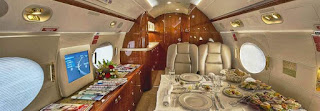https://centraljetcharter.com/piper-aztec.html
"PIPER AZTEC, Aircraft Charter!"
The Apache was Piper's first production twin-engined, four-place executive airplane.
As such it was to become the forerunner of a long line of Piper executive and charter aircraft that extends to this day.
"Piper Aztec Private Aircraft Charter"
piper aztec, private airplane, charter flights, charter planes
With this airplane, Piper left behind the tube-and-fabric Cub for the modern all-metal airplane.
This particular Apache performed commuter and charter service around the eastern United States.
When Piper purchased the assets of the Stinson Division of Consolidated Vultee Aircraft Corporation in 1948.
One of the proposed designs was the Twin Stinson that was to be a modification of the popular Stinson 108 Voyager/Station-Wagon.
It was powered by two 125 hp Lycoming O-290D engines. Flight tests in 1952 indicated that the airplane was under-powered and had some control response and vibration problems.
Correction of these difficulties resulted in the complete redesign of the airplane, including all-metal construction.
It has a single vertical fin, retractable landing gear, and 150 hp Lycoming 0-320-A engines with constant speed propellers.
Completed in July 1953, it was renamed the PA-23 Apache and was the first of the Piper "Indians," when Piper began naming its various aircraft after Indian tribes
This was still the least expensive twin of that class. Much to the surprise of many sceptics, sales began to climb and Piper production capacity had difficulty keeping up with the orders.
Piper upgraded the Apache in 1960 with 250 hp Lycoming engines, new flight instrumentation, a swept vertical fin that increased performance, and a new name, the Aztec.
Over 4,800 Aztecs were built. The Apache and Aztec price and size allowed smaller companies and executives to own or operate business aircraft.
The Piper Aztec grew from the Piper Apache design, and the two aircraft share the same model numerical designation of PA-23 established during the original Apache certification.
The earliest versions of the Aztec differed only slightly in appearance from the Apache, although early Aztecs featured higher performance obtained from 150-hp engines.
The Aztec F is equipped with flap-to-stabilator trim interconnect to automatically retrim to neutral pitch control pressures when the flaps are extended or retracted.
Also, improved slow-flight characteristics give a more positive climb/approach control. The Aztec probably ranks as one of the most docile of the conventional low-wing light twins.
While its maximum and cruise speeds compare favorably with the swiftest competitor, the short, thick wing permits slow and safe air speeds.
This means excellent short-field capabilities for critical situations. Both Aztecs can clear the equivalent of a five-story building in just 1,700 feet from brake release.
The normally aspirated Aztec’s 75-percent bestpower cruise is 206 mph with a range of 1,134 miles and 45-minute reserve. Optional tanks stretch that range to 1,519 miles.
The Aztec F is equipped with flap-to-statablize trim interconnect to automatically re-trim to neutral pitch control pressures when the flaps are extended or retracted.
Also, improved slow-flight characteristics give a more positive climb/approach control.
"PIPER AZTEC, Aircraft Charter!"
The Apache was Piper's first production twin-engined, four-place executive airplane.
As such it was to become the forerunner of a long line of Piper executive and charter aircraft that extends to this day.
"Piper Aztec Private Aircraft Charter"
piper aztec, private airplane, charter flights, charter planes
With this airplane, Piper left behind the tube-and-fabric Cub for the modern all-metal airplane.
This particular Apache performed commuter and charter service around the eastern United States.
When Piper purchased the assets of the Stinson Division of Consolidated Vultee Aircraft Corporation in 1948.
One of the proposed designs was the Twin Stinson that was to be a modification of the popular Stinson 108 Voyager/Station-Wagon.
It was powered by two 125 hp Lycoming O-290D engines. Flight tests in 1952 indicated that the airplane was under-powered and had some control response and vibration problems.
Correction of these difficulties resulted in the complete redesign of the airplane, including all-metal construction.
It has a single vertical fin, retractable landing gear, and 150 hp Lycoming 0-320-A engines with constant speed propellers.
Completed in July 1953, it was renamed the PA-23 Apache and was the first of the Piper "Indians," when Piper began naming its various aircraft after Indian tribes
This was still the least expensive twin of that class. Much to the surprise of many sceptics, sales began to climb and Piper production capacity had difficulty keeping up with the orders.
Piper upgraded the Apache in 1960 with 250 hp Lycoming engines, new flight instrumentation, a swept vertical fin that increased performance, and a new name, the Aztec.
Over 4,800 Aztecs were built. The Apache and Aztec price and size allowed smaller companies and executives to own or operate business aircraft.
The Piper Aztec grew from the Piper Apache design, and the two aircraft share the same model numerical designation of PA-23 established during the original Apache certification.
The earliest versions of the Aztec differed only slightly in appearance from the Apache, although early Aztecs featured higher performance obtained from 150-hp engines.
The Aztec F is equipped with flap-to-stabilator trim interconnect to automatically retrim to neutral pitch control pressures when the flaps are extended or retracted.
Also, improved slow-flight characteristics give a more positive climb/approach control. The Aztec probably ranks as one of the most docile of the conventional low-wing light twins.
While its maximum and cruise speeds compare favorably with the swiftest competitor, the short, thick wing permits slow and safe air speeds.
This means excellent short-field capabilities for critical situations. Both Aztecs can clear the equivalent of a five-story building in just 1,700 feet from brake release.
The normally aspirated Aztec’s 75-percent bestpower cruise is 206 mph with a range of 1,134 miles and 45-minute reserve. Optional tanks stretch that range to 1,519 miles.
The Aztec F is equipped with flap-to-statablize trim interconnect to automatically re-trim to neutral pitch control pressures when the flaps are extended or retracted.
Also, improved slow-flight characteristics give a more positive climb/approach control.




The Piper Aztec multipiston aircraft charter.
ReplyDelete